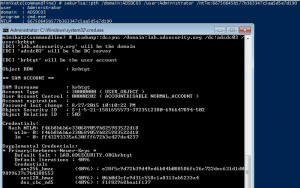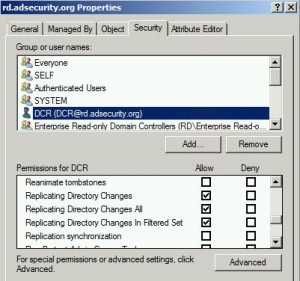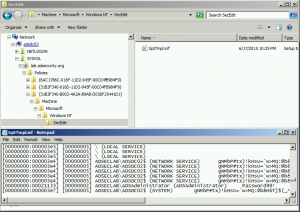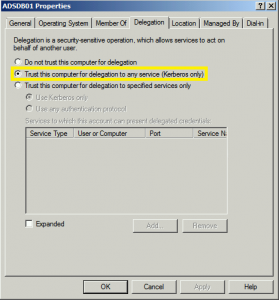The content in this post links to several methods through which an attacker could persist administrative access to Active Directory after having Domain Admin level rights for 5 minutes. While there are an infinite number of actions an attacker can perform after compromising an enterprise, there are a finite number of pathways. In this series, …
Category: Technical Reference
Sep 25 2015
Sneaky Active Directory Persistence #15: Leverage AdminSDHolder & SDProp to (Re)Gain Domain Admin Rights
The content in this post describes a method by which an attacker could persist administrative access to Active Directory after having Domain Admin level rights for 5 minutes. I presented on this AD persistence method at DerbyCon (2015). Complete list of Sneaky Active Directory Persistence Tricks posts AdminSDHolder Overview AdminSDHolder is an object located in …
Sep 25 2015
Sneaky Active Directory Persistence #13: DSRM Persistence v2
The content in this post describes a method by which an attacker could persist administrative access to Active Directory after having Domain Admin level rights for 5 minutes. I presented on this AD persistence method at DerbyCon (2015). I also presented and posted on DSRM as a persistence method previously. Complete list of Sneaky Active …
Sep 25 2015
Mimikatz DCSync Usage, Exploitation, and Detection
Note: I presented on this AD persistence method at DerbyCon (2015). A major feature added to Mimkatz in August 2015 is “DCSync” which effectively “impersonates” a Domain Controller and requests account password data from the targeted Domain Controller. DCSync was written by Benjamin Delpy and Vincent Le Toux. The exploit method prior to DCSync was …
Sep 16 2015
Sneaky Active Directory Persistence #12: Malicious Security Support Provider (SSP)
The content in this post describes a method by which an attacker could persist administrative access to Active Directory after having Domain Admin level rights for 5 minutes. I presented on this AD persistence method in Las Vegas at DEF CON 23 (2015). Complete list of Sneaky Active Directory Persistence Tricks posts The Security …
Sep 10 2015
DerbyCon V (2015): Red vs. Blue: Modern Active Directory Attacks & Defense Talk Detail
In a couple of weeks, I will be speaking at DerbyCon about Active Directory attack & defense in my talk Red vs. Blue: Modern Active Directory Attacks & Defense”. This is the 5th iteration of this talk and includes the latest updates to attack methods and defensive strategies. This DerbyCon version is a blend of …
Sep 10 2015
Sneaky Active Directory Persistence #11: Directory Service Restore Mode (DSRM)
The content in this post describes a method by which an attacker could persist administrative access to Active Directory after having Domain Admin level rights for 5 minutes. I presented on this AD persistence method in Las Vegas at DEF CON 23 (2015). Complete list of Sneaky Active Directory Persistence Tricks posts The Directory …
Sep 02 2015
Windows Server 2016 Technical Preview 3 Download & Release Information
Looks like we are getting closer to Windows Server 2016 RTM! Microsoft released Windows Server 2016 Technical Preview 3 in late August (Download & Release Notes).
Aug 13 2015
Active Directory Security Risk #101: Kerberos Unconstrained Delegation (or How Compromise of a Single Server Can Compromise the Domain)
At Black Hat USA 2015 this summer (2015), I spoke about the danger in having Kerberos Unconstrained Delegation configured in the environment. When Active Directory was first released with Windows 2000 Server, Microsoft had to provide a simple mechanism to support scenarios where a user authenticates to a Web Server via Kerberos and needs to …







Recent Comments